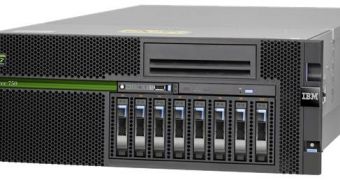A specially designed array of IBM P750 Express Servers will be adapted to study case chart data of current and future cancer patients.
IBM’s Watson technology is not much to look at from the general public’s point of view. Watson consists of 90 servers – not the most interesting thing to look at on the Jeopardy! Show’s stage.
The IBM Watson system gained fame by beating human contestants on the television quiz show Jeopardy! It can interpret queries in natural language and uses statistical analysis, advanced analytics and a powerful array of processors to search millions of pages in seconds and deliver evidence-based statistically-ranked responses.
Still, the ability to interpret human language and information very fast allowed IBM’s creation to win the game show two times.
The Memorial Sloan-Kettering Cancer Center (MSKCC) has begun a new project together with IBM to develop and use Watson technology to analyze patient chart data and give oncologists a fighting chance when it comes to seeing patterns in the various different types of the illness.
MSKCC’s world-renowned oncologists will assist in developing IBM Watson to use a patient’s medical information and synthesize a vast array of continuously updated and vetted treatment guidelines, published research and insights gleaned from the vast experience of research center clinicians to provide an individualized recommendation to physicians.
The tool will also provide users with a detailed record of the data and evidence used to reach the recommendations.
The need for such an advanced technology arises from the steadily increasing complexity of oncology treatment.
Cancer is the second most common cause of death in the U.S., surpassed only to heart disease, and the American Cancer Society projects that 1.6 million new cancer cases will be diagnosed in the U.S. this year with outcomes varying widely across the country. Cancer is not one disease but hundreds of sub-types, each with different genetic particularities.
The servers are based on IBM’s new generation of processors, the Power7, and have terabytes of storage capacity along with thousands computing cores working at 3.2 GHz up to 3.7 GHz depending on the type of processor card.

 14 DAY TRIAL //
14 DAY TRIAL //